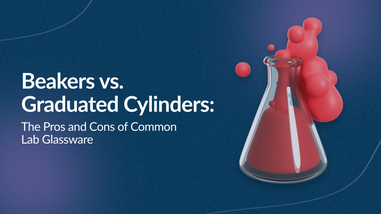- No products in the cart.
Moisture is an essential component of many materials, but it can also be a source of problems. For example, too much moisture can lead to mold growth, corrosion, and spoilage. In order to ensure the quality of their products, manufacturers and quality control professionals need to be able to accurately measure the moisture content of their samples.
This is where lab moisture analyzers come in. A lab moisture analyzer is an instrument that is used to determine the moisture content of a sample. There are many different types of lab moisture analyzers available, each with its own advantages and disadvantages.
In this blog post, we will provide a comprehensive introduction to lab moisture analyzers. We will discuss the different types of lab moisture analyzers, how they work, and their applications. We will also provide some tips for choosing the right lab moisture analyzer for your needs.
What is a Lab Moisture Analyzer?
A lab moisture analyzer is an instrument that is used to determine the moisture content of a sample. The moisture content of a sample is the percentage of the sample's weight that is made up of water.
There are many different types of lab moisture analyzers available, but they all work by the same basic principle. The sample is placed in the analyzer, and the analyzer then heats the sample until all of the water has evaporated. The weight of the sample is then measured before and after heating, and the difference in weight is the moisture content of the sample.

Types of Lab Moisture Analyzers
There are three main types of lab moisture analyzers:
- Thermogravimetric analyzers (TGAs) are the most common type of lab moisture analyzer. TGAs use a controlled heating element to heat the sample, and a balance to measure the weight of the sample.
- Karl Fischer moisture analyzers (KFMAs) are used to measure the moisture content of very low-moisture samples. KFMAs use a chemical reaction to determine the amount of water in the sample.
- Infrared moisture analyzers (IRMAs) use infrared radiation to measure the moisture content of a sample. IRMAs are a relatively new type of lab moisture analyzer, but they are becoming increasingly popular due to their speed and accuracy.
How Lab Moisture Analyzers Work
As mentioned above, there are three main types of lab moisture analyzers, and each type works slightly differently.
- Thermogravimetric analyzers (TGAs) use a controlled heating element to heat the sample. As the sample heats up, the water in the sample evaporates. The weight of the sample is then measured before and after heating, and the difference in weight is the moisture content of the sample.
- Karl Fischer moisture analyzers (KFMAs) use a chemical reaction to determine the amount of water in the sample. The Karl Fischer reaction is a reaction between iodine and sulfur dioxide in the presence of water. The amount of iodine that is consumed in the reaction is proportional to the amount of water in the sample.
- Infrared moisture analyzers (IRMAs) use infrared radiation to measure the moisture content of a sample. Infrared radiation is absorbed by water molecules, so the amount of infrared radiation that is absorbed by a sample is proportional to the amount of water in the sample.
Applications of Lab Moisture Analyzers
Lab moisture analyzers are used in a wide variety of industries, including:
- Food and beverage
- Pharmaceutical
- Chemical
- Plastics
- Paper
- Textiles
- Building materials
Lab moisture analyzers are used to ensure the quality of products, to monitor production processes, and to comply with regulations. For example, the FDA requires that all food products be labeled with their moisture content.
Benefits of Lab Moisture Analyzers:
Lab moisture analyzers offer several advantages, making them indispensable in various laboratory settings. These benefits include:
-
Accuracy and Precision: Moisture analyzers provide precise and reliable measurements, enabling users to make informed decisions.
-
Time Efficiency: Modern moisture analyzers offer rapid analysis, reducing testing time and improving overall laboratory efficiency.
-
Ease of Use: Lab moisture analyzers are designed with user-friendly interfaces, making them accessible to both experienced technicians and beginners.
-
Versatility: With different types and models available, lab moisture analyzers can accommodate a wide range of sample types, making them suitable for diverse applications.
-
Quality Control: By ensuring accurate moisture content, these analyzers help maintain product quality, minimize waste, and comply with regulatory standards.
Choosing a Lab Moisture Analyzer
There are many different factors to consider when choosing a lab moisture analyzer, including:
- The type of sample that you will be analyzing
- The accuracy and precision that you need
- The speed of analysis
- The budget
If you are unsure which type of lab moisture analyzer is right for you, it is a good idea to consult with a qualified expert.
Conclusion
Lab moisture analyzers are indispensable tools for accurate moisture analysis in various industries. Their working principles, types, applications, and benefits have been discussed in this comprehensive introduction. By understanding the fundamentals of lab moisture analyzers, scientists and technicians can harness their capabilities to improve quality control, research, and development processes. These instruments empower laboratories to achieve precise and reliable moisture measurements, contributing to the overall success of their work.
For over 40 years, Lab Pro Inc. has been committed to delivering the highest quality lab equipment such as moisture analyzers, lab supplies, Excelta hand tools, reagents, distance learning kits, and cleanroom PPE apparel. Renowned by global medical device companies and laboratories, we ensure exceptional quality in every product. Contact us online or call 888-452-2776 to learn more. Discover top-notch lab supplies and elevate your experiments today!












































